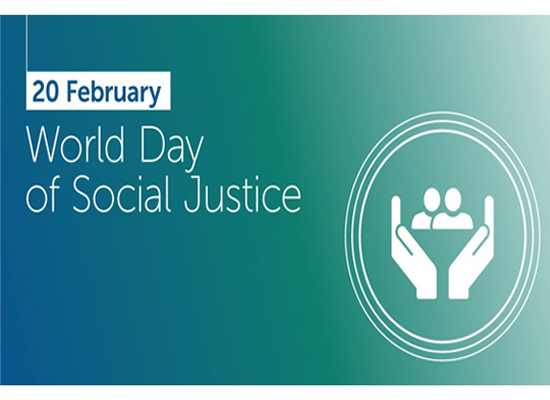Today, on 20th February 2020, we observe World Day of Social Justice. This year’s theme is Closing the Inequalities Gap to Achieve Social Justice. On this day, the United Nations (UN) and the Labour Organization Office (ILO) make statements about the importance of social justice for people. Many other organisations also present plans for greater social justice by tackling poverty, social and economic exclusion and unemployment.
According to the UN, 1 in 5 workers still live in moderate or extreme poverty, geographical disparities impede access to decent work, many workers face stagnant wages, gender inequality prevails and people are not benefitting equally from economic growth. Inequalities between and among countries are weakening social cohesion, preventing people from achieving their full potential and burdening economies. It is time to reduce inequalities globally, says the UN. So today, the UN and ILO will unite leaders and organisations to discuss policies needed to reduce inequalities and achieve social justice for all.
ADDRESSING STARK INEQUALITIES
Recent waves of globalisation, notably in international trade and finance, have done much to reduce global inequality, however, within countries, the gap between richest and poorest is widening. While extreme poverty has been reduced, the UN is concerned that income and wealth are increasingly concentrated: “Most economies are growing, but the labour share of national income is declining, and large portions of the world’s workforce have experienced real wage stagnation.”
Despite some progress in achieving social justice and efforts undertaken by member States and the international community, people in vulnerable situations face significant challenges in terms of labour force participation, equal pay and decent work opportunities. The UN and ILO believe there is a need to address the stark levels of inequality that exists within and between countries and in rural, urban and mountainous populations. Inequalities encompass much more than just differences in income, posing a serious obstacle to the achievement of social justice and sustainable development globally.
“The lack of decent work opportunities and formal employment exacerbates inequalities among societies, and it weakens social cohesion and people’s trust in governments and institutions. Not only are growing inequalities preventing people from achieving their full potential, and it is also putting a burden on economies,” states the UN. “All this has led to the growth of damaging and unacceptable inequalities, a situation where everybody loses. Closing the inequalities gap in the 21st century requires a comprehensive approach, targeting challenges that arise from rapid technological change, climate change and demographic shifts. It is thus a critical time for decisive actions for an equitable future, which requires strong and coordinated responses at the global level to address the multidimensional root causes and to achieve the 2030 Agenda for Sustainable Development.”
SOCIAL JUSTICE PRINCIPLES
Social justice is an underlying principle for peaceful and prosperous coexistence within and among nations, adds the UN: “We uphold the principles of social justice when we promote gender equality, or the rights of indigenous peoples and migrants. We advance social justice when we remove barriers that people face because of gender, age, race, ethnicity, religion, culture or disability.”
More interesting facts highlighting the need for social justice from the UN and ILO:
- Employment growth since 2008 has averaged only 0.1% annually, compared with 0.9% between 2000 and 2007.
- Over 60% of all workers lack any kind of employment contract.
- Fewer than 45% of wage and salaried workers are employed on a full-time, permanent basis, and even that share is declining.
- By 2019, more than 212 million people were out of work, up from 201 million in previous years.
- 600 million new jobs need to be created by 2030, just to keep pace with the growth of the working age population.
Click here for more information.






































